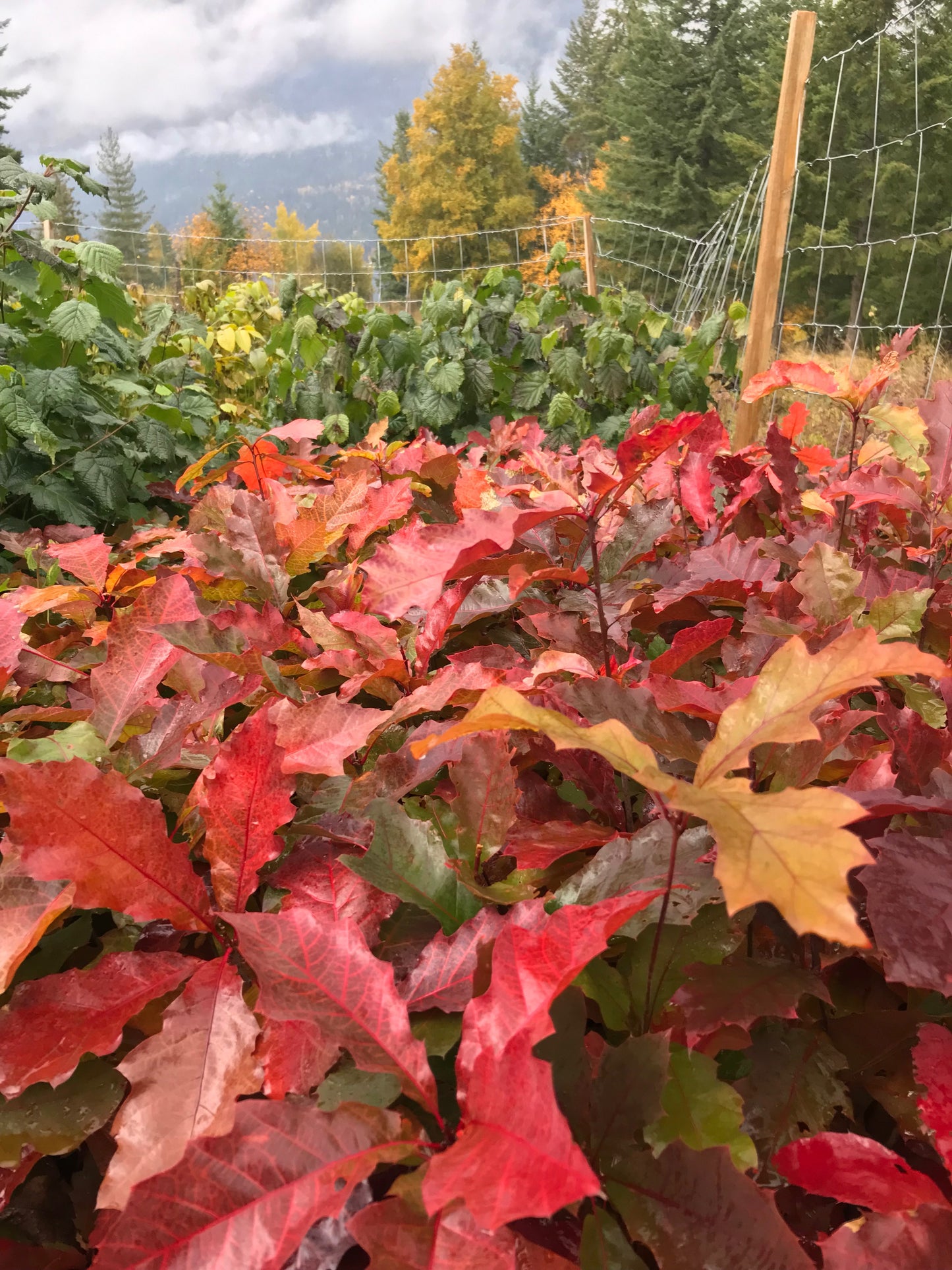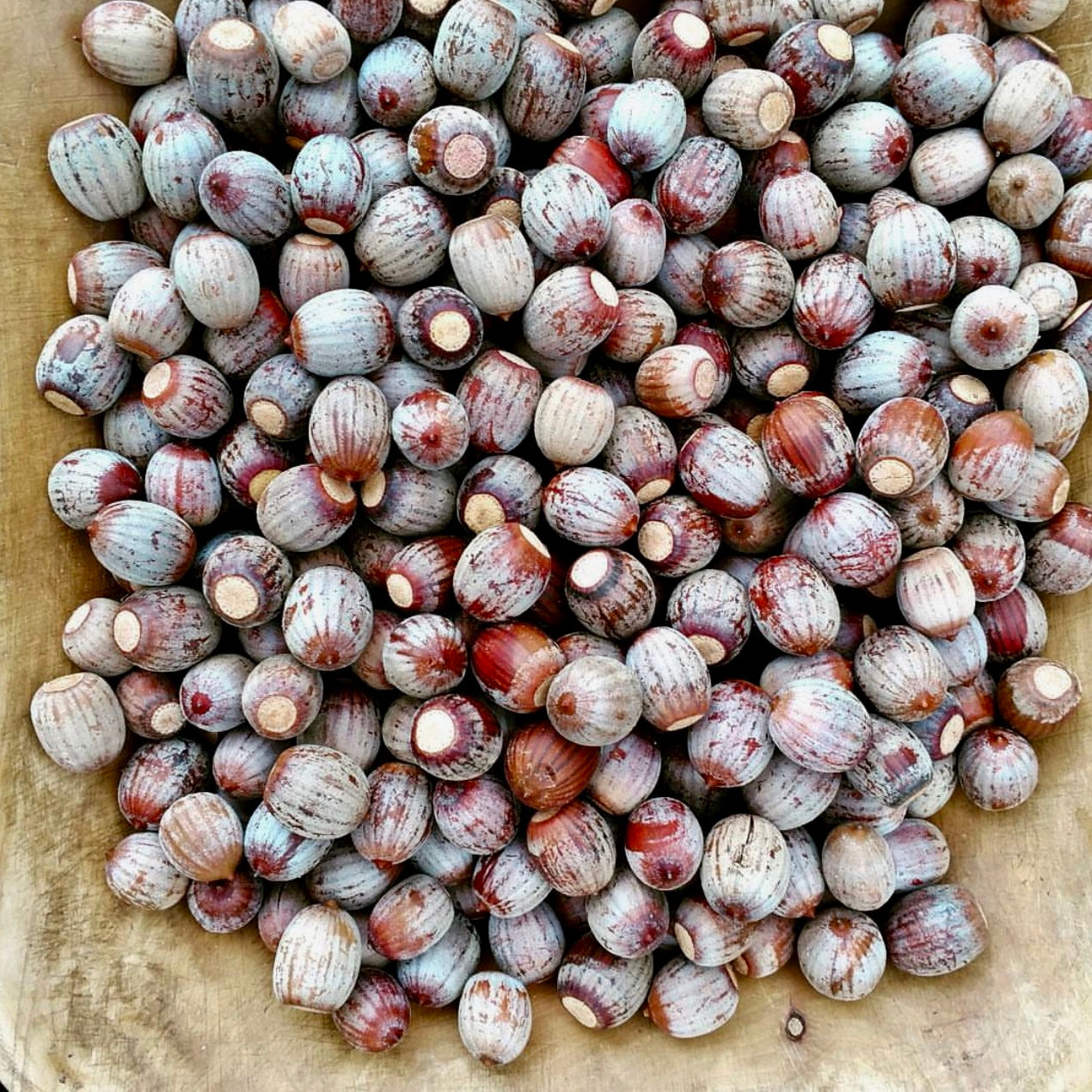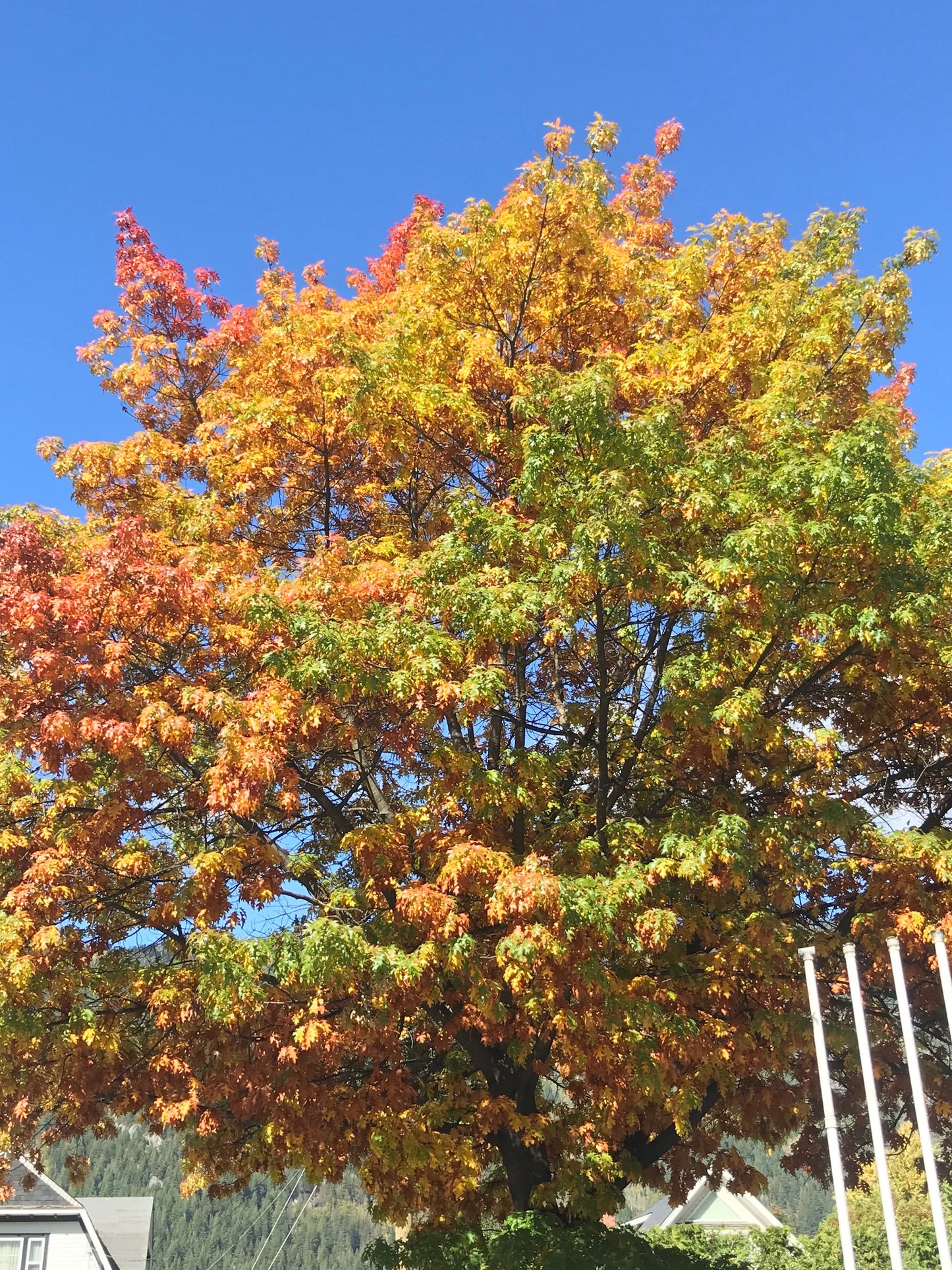Red Oak (Quercus rubra)
Red Oak (Quercus rubra)
Couldn't load pickup availability
Special Offers

Why We Grow It
Why We Grow It
We grow Red Oak for its blend of ecological value, long-term productivity, and landscape versatility. And don't forget that acorns are human food too. It offers dependable shade, habitat, and mast production while also contributing future timber and soil-building benefits. As a resilient, low-maintenance tree with multi-generational impact, Red Oak is an ideal choice for growers seeking to establish strong canopy layers, increase biodiversity, and build durable agroforestry systems that stand the test of time.
How the Plant Grows
How the Plant Grows
Red Oaks grow quickly in their early years, developing a tall, straight trunk and a rounded crown. Their leaves, with characteristic pointed lobes, turn a brilliant red in fall, adding ornamental value. Over time, they form a dense canopy, offering shade and habitat for a variety of species. Acorns begin to appear after 20-30 years, with heavy production every 2-3 years. The tree’s ability to adapt to urban environments and poor soils makes it an adaptable and long-lived member of your landscape
Plant Size
Plant Size
Size at Maturity- Canopy Layer. Grows to 60-80 feet tall with a spread of 40-60 feet
Current Size- 1 Year Old Seedling 8"-16"+ with large whole taproot
Additional Info
Additional Info
This species establishes quickly and develops into a long-lived, wind-firm tree with excellent drought tolerance once mature. Acorns are produced annually after the tree reaches bearing age, supporting wildlife, livestock, and traditional food uses. Red Oak is widely recognized for its durable, straight-grained wood, which is prized in cabinetry, flooring, and structural applications. Its extensive root system improves soil structure over time, and its canopy provides shade that benefits understory plantings and silvopasture rotations.
Red Oak (Quercus rubra) is a stately, fast-growing North American hardwood valued for its high-quality timber, generous acorn crops, and strong adaptability to a wide range of soils and climates. With its broad canopy, rich red fall color, and reliable growth habit, Red Oak serves as both an ornamental centerpiece and a functional anchor in food forests, silvopasture systems, and regenerative landscapes. Its ability to thrive in compact soils and withstand urban stress makes it equally suited to homesteads, farms, ecological plantings, and restoration sites.
Share



Plant Highlights
-

Water
Moderate; tolerates occasional dry conditions once established
-

Pollination
Wind-pollinated; monoecious, with both male and female flowers on the same tree.
-

Soil
Thrives in well-drained soils but tolerates compact or urban soils; prefers slightly acidic to neutral pH
-

Years to Bear
Produces acorns within 10-15 years, with peak production every 2-3 years.
-

Hardiness
Zone 3, tolerating temperatures as low as -40°C
-

Solar
Prefers full sun, tolerates partial shade in its early years
Subscribe to our emails
Lots of Free Growing Info. Be the first to know about new plants and exclusive discounts.









